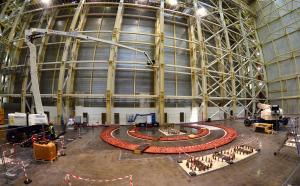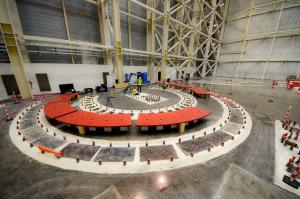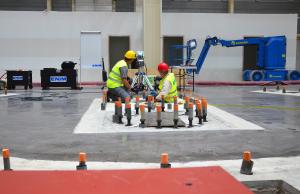Anchoring a giant tool
The first assembly activities have been carried out for the largest tool in the ITER arsenal—the giant sector sub-assembly tool (SSAT) that will be strong enough (and tall enough) to suspend a 440-tonne vacuum vessel sector during pre-assembly activities. The ground-level elements of the tool are now in place.




